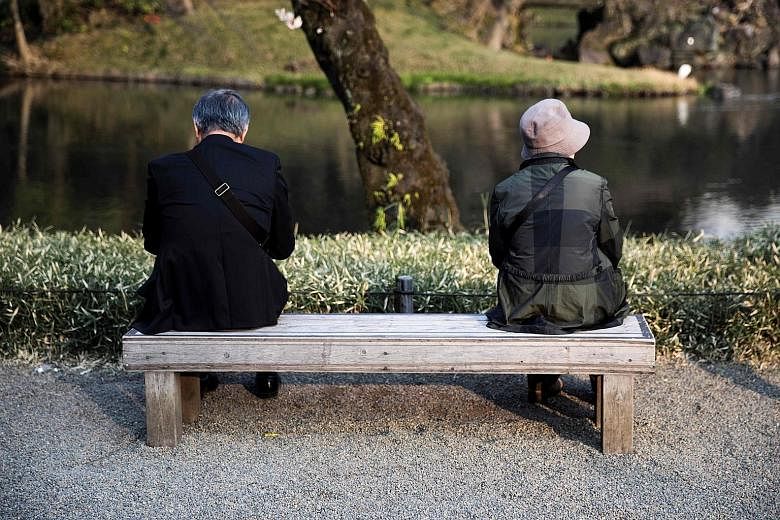Japan's population will shrink about 30 per cent by 2065 to 88.1 million, a government research group said yesterday, prompting Tokyo to vow intensified efforts to arrest the decline.
But there was a silver lining - the rate of decline was not as bad as what was earlier forecast.
This is due to "more women in their 30s and 40s having children", the National Institute of Population and Social Security Research said in a forecast done every five years, which takes into account census data and demographic trends.
The health ministry will use the findings for studies on the use of pension funds and other measures to deal with population decline.
Japan's population, which peaked at 128.1 million in 2008, has since declined to about 127 million.
-
DECLINING NUMBERS
-
127m
Japan's population today
88.1m
Expected population in 2065
2053
Year population is set to fall below 100 million
1.44
Projected fertility rate in 2065
SOURCE: NATIONAL INSTITUTE OF POPULATION AND SOCIAL SECURITY RESEARCH
While deaths have outpaced births, Japan's 2015 fertility rate inched up to 1.45 and is expected to be 1.44 in 2065 - higher than the previous estimate of 1.35 in 2060.
Chief Cabinet Secretary Yoshihide Suga said the findings indicate that measures to boost fertility rates by providing parents with support in childcare and at the workplace are working.
He said the government will "respond with all our strength" to its "most important issue".
A new Cabinet post was created in 2015 to keep the population from slipping below 100 million by 2060. The latest findings still expect this to happen by 2053, albeit five years later than previously expected.
The ranks of those aged 65 and older will also likely grow to 38.4 per cent of the population by 2065, from the current 26.6 per cent.
This raises the burden on working adults, with each elderly resident supported by 1.2 working adults in 2065 - down from 2.1 in 2015.
Some smaller cities and rural areas have already been hit by population decline, as young people seek jobs elsewhere. For instance, Kitakyushu has lost 100,000 people since its peak in 1979, Bloomberg reported, while Shizuoka said last week its population dipped below 700,000 for the first time.
Chairman of influential business lobby Keidanren, Mr Sadayuki Sakakibara, said yesterday that the "extreme shortage of labour" was a long-term risk that will only become more acute in future.
Dr Emi Kataoka, a sociologist at Tokyo's Komazawa University, said it was not surprising for women to have children later, given their greater focus on careers.
But she wondered about the increased fertility rate. "The true verdict of how successful policy countermeasures are will lie in how sustainable the increased birth rates are in the long term."

